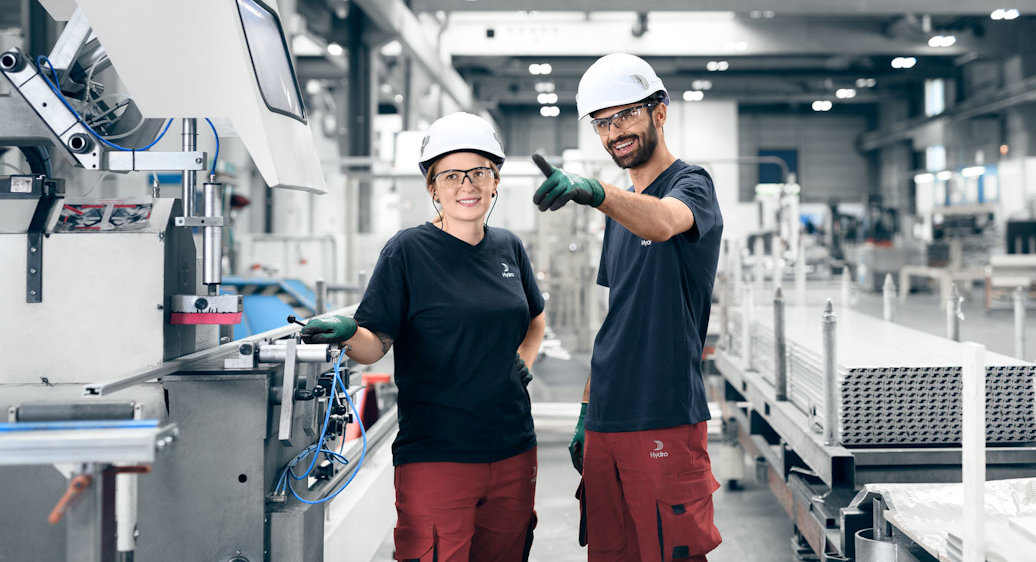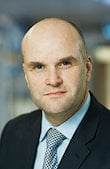Key highlights
- Expecting up to NOK 2 billion greener earnings uplift by 2030
- Stepping up growth in Extrusions to NOK 10-12 billion EBITDA in 2030
- Stepping up growth in Recycling to NOK 5-8 billion EBITDA in 2030, partially driven by increasing post-consumer scrap to 850-1,200 kt by 2030
- Increasing CO2 reduction target until 2030, maintaining 30% target despite portfolio changes, and stepping up nature positive efforts through initiatives on biodiversity, waste handling and land use
- Increasing improvement program to NOK 14 billion in 2030, including additional potential from digitalization, and increasing commercial ambitions to NOK 6.1 billion in 2030, including the full potential for greener premium earnings uplift
- Updating 2024 and medium-term capex guiding to 15 billion annually from currency, inflation and 2023 carry-over, and adding annual flexibility up to NOK 1-2 billion, while estimating a NOK 2 billion net operating capital release in 2024
- Aiming to distribute 50-60 percent of adjusted net income to shareholders for 2023, in-line with capital structure target
“Based on our leading position we are now shifting gear. Towards 2030 we are stepping up growth ambitions in Extrusions, recycling and renewable power generation aimed at capturing market opportunities emerging from the green transition,” says President and CEO Hilde Merete Aasheim.
In 2020, Hydro set out a forceful agenda towards 2025 to develop a more robust, higher-earning and more sustainable company. Hydro has delivered on this strategy through improved earnings and sustainability performance, and a more robust portfolio, positioning the company for strategic resilience in a world in transition.
“Hydro is uniquely positioned to pioneer the green aluminium transition. With our cutting-edge material and aluminium competence ranging from bauxite to extruded solutions, combined with our in-house competence in developing and operating renewable energy, and a concrete roadmap to zero, we are ready to change the game for aluminium,” says Aasheim
Since 2020, the business environment has rapidly changed with geopolitical tensions affecting global trade, cooperation, and energy prices. Amid current market challenges, strong demands for key materials like aluminium, steel, and copper are expected due to the green transition. The shift to electric vehicles, escalating demand for solar and wind infrastructure, and stricter energy-efficiency regulations in construction, underscore the increasing need for aluminium. Achieving a sustainable green transition depends on producing these materials with the lowest possible carbon footprint and minimal impact on nature and communities, while adapting to new risks and opportunities.
In the 2030 strategic direction, Hydro is stepping up growth investments in Extrusions and recycling to capitalize on the green transition opportunities. Ambitions in renewable power generation are elevated to ensure affordable renewable energy in the aluminum value chain at attractive returns. In addition, Hydro will continue to focus on a forceful execution of its decarbonization and technology roadmap, contributing to nature conservation and a just transition, and shaping the market for greener aluminum in partnership with customers.
Stepping up growth investments in Recycling and Extrusions
In recycling, the recent acquisition of the Polish recycler Alumetal and investment in HyForge in Rackwitz, Germany enriches product outlets by utilizing different scrap types to cater for the growing market for recycled aluminium. In addition, the greenfield recycler Hydro Cassopolis in Michigan, US was officially opened on November 16, aiming to supply aluminium and Hydro CIRCAL to the automotive and US market. By the end of this year, Hydro is ramping up to 540 kt post-consumer scrap capacity (PCS), already achieving the 2025 target set out in last year’s Capital Markets Day of 520-670 kt.
Hydro is stepping up growth in aluminium recycling to meet the increasing demand for low-carbon, recycled products. Looking ahead to 2030, the ambition is to further increase PCS usage towards 850 kt to 1,200 kt, compared to the 2027 target of 770 kt. Investments include expanding and upgrading recycling facilities, and strengthening the position in scrap sourcing and advanced sorting capabilities. Hydro aims to further diversify the portfolio of cast house products, in collaboration with customers, to unlock the potential for increased use of recycled materials in new segments. Depending on market developments and capital availability, this is estimated to give a recycling EBITDA in the range of NOK 5-8 billion in 2030.
Hydro Extrusions has improved profitability through innovative solutions in non-commoditized segments, positioning for a targeted NOK 8 billion delivery in 2025 in normalized markets, to be further stretched towards 2030. With expanded capacity, new presses, and a focus on greener offerings, Hydro Extrusions aims to seize emerging market opportunities and increase its global market share. Depending on market growth and capital availability, the ambition is an EBITDA range between NOK 10 and 12 billion by 2030.
Stepping up ambitions within renewable power generation
There is an urgency to develop more renewable power combined with heightened competition and risk of price increase. Despite global climate goals, the pace of new capacity development is lagging. Solar and wind power is expected to play an increasingly prominent role in the grid, creating more volatility in generation and loads. The green aluminium transition will not be possible without more renewable energy at an affordable price. Hydro’s inhouse capabilities to scale up renewable power production provide a competitive advantage to take a leading role in this development.
Towards 2030, Hydro is seizing the opportunity to extract value from the volatile energy landscape, by maximizing the flexibility of intermittent power sources and enhancing market operation management. Hydro Rein has actively been pursuing attractive renewable energy prospects, catering to Hydro and a broader customer base, primarily in the Nordics and in Europe. Through the recently announced joint venture partnership with Macquarie, Hydro Rein is now positioned to further accelerate and deliver attractive risk-adjusted equity returns of 10 to 20 percent. The 2030 EBITDA from Hydro Energy, including a pro-rata contribution from Hydro Rein, is expected at NOK 4.7 billion normalized.
Execute on decarbonization and technology road map and step up to contribute to nature positive and a just transition
Hydro is making significant strides towards carbon reduction goals, targeting a 30 percent reduction in its carbon emissions by 2030, primarily driven by fuel switching and boiler electrification at the Alunorte alumina refinery. Despite Hydro’s lower ownership share in Alunorte, reducing the impact of these efforts in Hydro’s numbers, Hydro is committed to maintain a 30 percent reduction target by 2030, effectively stretching its ambitions. To deliver on this stretch target, Hydro will explore initiatives like decarbonizing casthouses with green hydrogen, biofuels or direct electrification, and using bio-materials for anode production. In total, the portfolio changes and existing decarbonization programs will result in a 47 percent reduction in greenhouse gas exposure by 2030 compared to 2018. The two technology paths to zero, HalZero for new capacity and carbon capture for existing smelters, are progressing according to plan, toward industrial scale by 2030.
Greener is more than low carbon, and Hydro has clear commitments to biodiversity, waste management, and non-greenhouse gas emissions, aligned with the Global Biodiversity Framework. The goal of no net loss of biodiversity for the Hydro Paragominas bauxite mine is expanded to include historic impacts from 2020 for the existing footprint. This involves improved onsite biodiversity management and investments in biodiversity offsets around the mining operation. For a successful implementation, Hydro is partnering with IPAM and IMAZON to jointly pursue sustainable development in Paragominas. Hydro will partner with the World Economic Forum’s Alliance for Clean Air to create an inventory of air emissions in our supply chain. This collaborative effort aims to define baselines and establish targets to reduce the embedded footprint of our aluminum products, championing collective action on air pollution across the value chain.
A just transition framework is developed to positively contribute to respect and promote human rights, support positive local development, invest in education, and ensure responsible supply chains. Through continuous due diligence, local initiatives and partnerships, Hydro is committed to improve lives and livelihoods in the local communities where the company operates.
Shape the market for greener aluminium in partnership with customers
Hydro has a unique ability to utilize the integrated value chain to deliver low carbon aluminium products, complete with traceability and transparency at every step from mine to component. Hydro is leveraging on this position through establishing strategic partnerships with selected high-profile customers and has already spearheaded partnerships with leading players in the automotive industry like Mercedes-Benz, Porsche and Polestar.
Delivering low carbon products creates value for Hydro’s customers and enables premium pricing with bottom-line effects for the company. With the roadmap Hydro has set out towards 2030 to drive down product footprint further, both within primary and recycled aluminium, Hydro will transform its product offering from Hydro REDUXA 4.0 to Hydro REDUXA 3.0. Further growth in recycling and increasing content of post-consumer scrap enables for a broader and more high-premium Hydro CIRCAL portfolio.
Based on the premiums Hydro is receiving today and the capacity available in 2030, there is a potential for NOK 2 billion in greener premium earnings uplift as Hydro further develops and offers industry leading products. This potential will depend on a range of factors and how the market develops; but with current starting point and roadmap towards zero, Hydro is dedicated to creating value for customers, creating value for Hydro, all while driving down CO2 emissions in a responsible way.
Strengthened resilience and greener value creation
Hydro’s earnings from the fourth quarter 2022 to the third quarter 2023 was NOK 25.7 billion compared to a record high NOK 39.7 billion in 2022, driven lower by weaker economic growth. However, strengthened resilience and a robust capital structure has supported strategic capital allocation, with 60 percent of capital spending allocated towards return seeking and strategic growth during 2023. In line with the dividend policy and capital structure targets, Hydro aims to distribute 50-60 percent of 2023 adjusted net income to its shareholders. Final distribution for 2024 will be proposed by the Board of Directors at the fourth quarter release in February 2024, and subject to approval by the Annual General Meeting in May 2024.
Hydro has strengthened its position by delivering NOK 8.6 billion improvements, by lifting operational excellence, optimizing fixed costs and through procurement initiatives. All business areas are on podium positions within their industry, with first quartile positioning in Aluminium Metal and Bauxite & Alumina, closing the gaps to peers in Extrusions, and with an EBITDA uplift of NOK 2 billion in Energy. Hydro will continue to improve, and the improvement program is stretched with an additional NOK 3 billion to NOK 14 billion in 2030.
Commercial initiatives have further contributed to earnings resilience, by pursing market and customer-driven growth opportunities and developing the greener premium market. Hydro estimates to deliver NOK 2.9 billion by year-end, including commercial improvements in Energy, and is well ahead of the 2025 target of NOK 2.5 billion already in 2023. The commercial ambition is further stretched to NOK 6.1 billion towards 2030, including the full greener premium earnings potential of NOK 2 billion.
Hydro’s strategic agenda continues to guide capital allocation, and capital discipline remains a key financial priority towards 2030. For 2023, Hydro expects NOK 22.5 billion in investments, including Hydro Rein, NOK 1 billion lower than guided at Q2. The updated capex guidance for 2024, is NOK 15 billion, which includes NOK 400 million carry-over from 2023, and NOK 2 billon in fx and inflation effects. For 2025-2028, the guidance is NOK 15 billion, reflecting fx and inflation, in addition to strengthened growth ambitions within recycling and Extrusion. Depending on market development and growth capacity, there is potential for accelerated growth investments of NOK 1-2 billion per year, enabling the top of the EBITDA growth target ranges. The long-term sustaining capex is estimated at NOK 8.0 billion.
Hydro will continue to ensure efficient levels of working capital and has targeted a release of NOK 2 billion through 2024, reflecting current market prices.
The proposed capital allocation, improvement targets and commercial ambitions, strengthens Hydro’s competitive position and increases earnings resilience through the economic cycles, enabling further growth and attractive shareholder distributions.
Pubblicato: 29 novembre 2023









